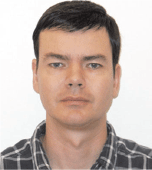Locating and quantifying coal cleats with electrical and acoustic imagers for CSG development
Mikhail Yakimov A , Thomas Gan B , Saikat Mazumder B and Marcel Croon AA Weatherford.
B Arrow Energy.
The APPEA Journal 54(2) 538-538 https://doi.org/10.1071/AJ13111
Published: 2014
Abstract
CSG development often presents significant challenges in reservoir characterisation and prediction. Both gas and water production are driven by systems of interconnected or disjointed cleats; hence, a clear understanding of cleat geometry is required to optimise the prospective production and minimise the cost of drilling. Electrical and ultrasonic wellbore imagers, along with other methods, such as high-resolution wireline logging and coal coring, provide the necessary information for the in-depth cleat geometry evaluation. The models can be integrated to early production results for comparison. Processing and interpreting vast amounts of image data requires construction of robust yet flexible information solutions for data handling and visualisation. Each solution would typically involve several commercial software products, as well as some ad-hoc programming code for routine operation automation, standardised data presentations and human-readable outputs. Based on the project example from the Surat Basin in Queensland, the report describes the development of such a solution undertaken by Arrow Energy and Weatherford International. Advantages and limitations of each particular image tool (as applicable to the typical CSG project settings) have been addressed. The project structure and standardised answer products are described in detail, along with the early interpretation results from Surat fields. The results of the project can be applied to evaluation of similar CSG prospects.

Mike Yakimov graduated from the Novosibirsk State University in 1992. Since then he worked in Russian Academy of Sciences (1 year), Schlumberger (13 years), Sakhalin Energy / Shell (4 years). Presently he has been with Weatherford for 3 years, based in Brisbane. As for many oilfield professionals, his career spans through many countries and places: Russia, Vietnam, Cambodia, Malaysia, the United States, Japan and Australia, just to mention the major projects. Besides the Geoscience, Mike writes software (both for the Geoscience business and as a hobby), and builds autonomous robots and RC trucks. The full profile can be seen at: http://www.linkedin.com/profile/view?id=108003437&trk=nav_responsive_tab_profile. |

Thomas Gan graduated with a BEng from University of Melbourne and an MTech in Petroleum Engineering from Curtin University, Australia. He joined Shell International in 2005, as a Petroleum Engineer in the Netherlands and held various subsurface positions in technical, project management and technology development portfolio. He moved to Shell Projects & Technology in Houston as the technology portfolio manager and then later transferred to Shell Upstream America as the senior petrophysicist for the unconventional assets in Anadarko and Permian basins. Since Feb 2013, Thomas is a Shell secondee in Arrow Energy as the Petrophysics & Geomechanics Discipline Lead in Queensland, Australia. |

Saikat Mazumder is a coalbed methane specialist who completed his PhD in reservoir engineering at Delft University of Technology in 2006. He is leading a technical team at Arrow Energy involved in field design optimisation, development planning, reservoir modelling and production optimisation for Surat basin upstream development in Queensland, Australia. His responsibilities include delivery of well engineering input for exploration campaigns and field development plans, evaluation of development concepts and ramp options and assessment of key uncertainties impacting surface production system development. This involves defining integrated subsurface workflow models, establishment of processes for assessing and managing commercial risk and exposure and performing ranking and screening in the business planning process. Saikat is also responsible for preparation of effective management of HSSE risk as part of field development planning. |

Marcel Croon has more than 7 years of experience in the petroleum and mining industry. His expertise includes geophysical (seismic, magnetic, gravity, bathymetry), geological and geotechnical data acquisition and interpretation for onshore and offshore projects around the world. He is currently based in Queensland, Australia, and primarily works on unconventional gas projects. This work involves borehole seismic, microseismic, petrophysical and structural data analyses and workflow automation through programming and database management. He was awarded the Antarctica Service Medal in 2010 for his publications/contributions to Antarctic research during his Ph.D. in geophysics at the Scripps Institution of Oceanography at the University of California, San Diego. |
References
Korsch, R.J., and Totterdell, J.M. (2009). Subsidence history and basin phases of the Bowen, Gunnedah and Surat Basins, eastern Australia Australian Journal of Earth Sciences 56, 335–353.| Subsidence history and basin phases of the Bowen, Gunnedah and Surat Basins, eastern AustraliaCrossref | GoogleScholarGoogle Scholar |
Gamson, P.D., Beamish, B.B., and Johnson, D.P. (1993). Coal microstructure and micropermeability and their effects on natural gas recovery Fuel 72, 87–99.
Flores, R.M., 2013—Coal and Coalbed Gas: Fueling the Future, 2013. Elsevier Science.


